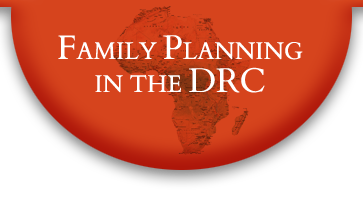Family Planning History in the DRC
Back to About the DRCCOLONIAL HERITAGE PRIOR TO INDEPENDENCE ON JUNE 30, 1960
Prepared By:
CHIRWISA FLORA CHIRHAMOLEKWA,
MALONGA MIATUDILA,
From 1908 to 1960, the DRC was under Belgian colonial rule and was known as the Belgium Congo. Many of the current-day practices related to fertility and family planning date back to that period and even before.
As in many other African countries, traditional societies recognized the importance of birth spacing and abhorred short intervals between births. They believed that failure to space births threatened the survival of the child, as reflected in the term kwashiorkor (literally translated as the affliction planted by the elder baby – kwaski – as a result of the early arrival of the following baby – orkor). To prevent the shame associated with unintended pregnancies, women used two main strategies to space births: universal and prolonged breastfeeding, as well as prolonged post-partum abstinence. Women would abstain from sexual relations for months (often longer than a year) to avoid becoming pregnant. Polygamy facilitated this practice, since men had other wives during the woman’s period of post-partum abstinence. However, the Belgians imposed their notions of Christianity and western norms on the local population, causing polygamy as an institution to decline (though not influencing the practice of having multiple partners).

Prior to 1900, infertility was particularly high in the regions devastated by the slave trade. During the 1920-30s, the greater geographic mobility that came with colonial rule resulted in the spread of various diseases, including African Trypanosomiasis and sexually transmitted infections, which also contributed to sterility. After World War II, sterility started to decrease gradually throughout Congo, especially in cities. In the 1950s, an estimated one in five women aged 30 or above were childless, more than three times of what should be expected in a healthy population without family planning.
Prior to 1960 (and independence), the colonial government designed and implemented a vigorous pronatalist policy over a period of more than fifty years. The colonial authorities believed that the social and economic development of Belgium required drastic growth of Congo’s population and therefore, introduced a wide range of financial and material incentives in favor of large families. The incentives included generous family allowances for workers, significant tax exemption, priority housing, attractive gifts to children and pregnant women attending health facilities, free education, and periodic public ceremonies in honor of couples with seven boys or seven girls. Faith-based organizations, commercial enterprises, other private institutions, and government institutions waged overt and subtle war against various traditional methods that the locals used to control their fertility. Belgian Congo also adopted an anti-birth control legislation that Belgium had borrowed from France in the 1920s. The legislation, which was passed in the aftermath of World War I, prohibited any kind of encouragement to use contraception, as well as any kind of propaganda in its favor. Induced abortion was equated with infanticide and subjected to severe punishments.
Belgian Congo’s efforts to increase fertility and lower mortality were successful. By the time of independence, the total fertility rate in the Democratic Republic of Congo was high, especially in urban areas and among monogamous women. At the time of independence, the total fertility rate was about 6 children in the DRC and about 8 children in Kinshasa. In the 1960s, most women nearing the end of their childbearing years had given birth to at least 10 children, more than three times the average number observed in earlier cohorts.
MATERNAL AND CHILD HEALTH ORGANIZATIONS DURING COLONIAL RULE
Services for the health of the mother and child were organized by several NGOs, foundations, and research centers including:
- The NGO Assistance Aux Maternités et Dispensaires du Congo (AMDC) (Assistance to the Maternity Centers and Clinics of Congo)
- La Fondation de Fonds Reine Elisabeth pour l’Assistance Médical aux Indigènes (FOREAMI) (Queen Elisabeth Fund for Medical Assistance to Indigenous Populations)
- Œuvres Reine Astrid pour la Mère et l’Enfant indigènes (ORAMEI) (Works Queen Astrid for Indigenous Mothers and Children)
- Fonds du Bien (FBI) (Fund's Well), which focused on indigenous populations
- L’Institut de Recherche en Afrique Centrale (IRSAC) (Research Institute of Central Africa), which provided aide to malnourished children amongst others
- Le Centre Médical et Scientifique de l’Université Libre de Bruxelles au Congo (CEMUBAC) (The Center of Medicine and Science of the Free University of Brussels in the Congo)
All these NGOs, foundations, and research centers received substantial budgets from the Belgian government and the Belgian Kings to take care of Mothers and Children of the colony called "BELGIAN CONGO AND RWANDA URUNDI". However, family planning was not a focus of their efforts because the organizations felt that procreation was necessary for labor. Also, Catholicism was the most predominant religion in the country and prohibited artificial contraceptive use.
In addition, several mining and agricultural companies and other organizations became involved supporting the women and children of their workers. Some of these organizations include:

- La Minière de Bakwanga (MIBA) (The Bakwanga Mining Company)
- La Générale des Carrières et des Mines (Gecamines) (The General of Careers and Mines)
- La Société minière de Kindu (SOMINKI) (The Mining Society of Kindu)
- Les Mines de Kilomoto (The Mines of Kilomoto)
- La Cotonnière du Congo (COTOCON) (The Cotton Congo)
- Les Plantations Lever du Zaïre (PLZ) (The Plantation Sunrise Zaïre)
- L’Office des Transports du Congo (OTRACO) (The Office of Transportation of Congo)
Consequently, these companies had to allocate part of their budgets to the maternal and child health of their workers.
With independence, several of these organizations, including AMDC, ORAMEI, and FBI, were abolished, bringing an end to the maternal and child health services that had benefitted thousands of women to that date. However, CEMUBAC and IRSAC survived and these organizations still operate, mainly in Eastern Congo. Although FOREAMI has changed into the National Medical and Health Fund (FONAMES), all attempts to revitalize this institution have failed.
DAWN OF THE REPUBLIC OF CONGO (JUNE 30, 1960) AND POST-COLONIAL RULE
June 30, 1960
The country received its independence from Belgium and took on the name “Republic of Congo.” Patrice Lumumba was elected Prime Minister and Joseph Kasavubu was elected President during elections in May 1960.
1965
Joseph Mobutu, chief of staff of the Armée Nationale Congolaise (ANC), staged a military coup, resulting in the official name of the country to be changed to the “Democratic Republic of the Congo.”
INTRODUCING THE PARADIGM OF NAISSANCES DESIRABLES
1971
The official name of the country changed again to the “Republic of Zaïre.”
1972
 President Mobutu Sese Seko gave a historic speech in which
he endorsed the concept of Naissances Desirables
(desirable births). The visionary speech made Zaïre the
first French speaking country in Sub-Saharan Africa to
embrace the paradigm of family planning. The government
of Zaïre preferred the term “desirable births,” which
was considered more culturally acceptable than “family planning.”
The motivation to introduce this type of program resulted from
the high infant and maternal mortality rates and high induced
abortion rates among young women, leading to the infanticide,
death, and the abandonment of babies. The term also reflected
a desire to prevent undesirable births and fight against unwanted sterility.
President Mobutu Sese Seko gave a historic speech in which
he endorsed the concept of Naissances Desirables
(desirable births). The visionary speech made Zaïre the
first French speaking country in Sub-Saharan Africa to
embrace the paradigm of family planning. The government
of Zaïre preferred the term “desirable births,” which
was considered more culturally acceptable than “family planning.”
The motivation to introduce this type of program resulted from
the high infant and maternal mortality rates and high induced
abortion rates among young women, leading to the infanticide,
death, and the abandonment of babies. The term also reflected
a desire to prevent undesirable births and fight against unwanted sterility.
February 14, 1973
To ensure appropriate implementation, President Mobuto signed the Presidential Ordinnance No. 73/089 for the establishment of the Conseil National pour la Promotion des Naissances Desirables (CNPPND; National Council for the Promotion of Desirable Births). This law authorized the promotion of information and services for the desirable births program.
1975
The Ministry of Health, in collaboration with local churches, organized a national conference, which established the mandate for primary health care and the creation of decentralized health zones. Between 1975-1992, a few hospitals, with church or NGO support, established prototype health zone operations (e.g., Kisantu, Vanga, Bwamanda, Katana, Kasongo, and Kimpese). This eventually led to the development of a five-year health plan in 1982, which established the vision for creating 300 health zones from the 400 scattered state and church hospitals.
November 1976
The CNPPND entrusted its field operations to a technical body called the Comité National des Naissances Desirables (CNND; National Committee for Desirable Births), which was responsible for conducting programs to promote family planning services. It began offering family planning services in Kinshasa on a small scale. Under the leadership of Dr. Ferdinand Pauls and Dr. Anatole Sabwa a Matanda and using Kinshasa’s Mama Yemo Hospital – a two thousand-bed hospital – as its base of operations, the Committee developed a network of birth control advocates, including gynecologists, nurses, lawyers, sociologists, journalists, and demographers. Within two years, contraceptive services became available in various parts of the country, including through health facilities operated by commercial companies and faith-based organizations. Catholic institutions joined the movement, but they concentrated their efforts on the promotion of abstinence outside marriage and the rhythm method for couples. The Intra Uterine Device (IUD), the injectable (medroxy-progesterone acetate), oral contraceptive pills, foam, the rhythm method, and tubal ligation were the most widely available methods of preventing pregnancy. The Protestant Church (Eglise to Christ au Zaire) Medical Office, with the Director Nlaba Nsona and missionaries Florence and Ralph Galloway, actively supported family planning and facilitated linkages of ECZ hospitals to obtain commodities from CNND.
September 6-12, 1978
After the Alma Ata conference on September 6-12, 1978, under the leadership of the international community and with support from WHO and UNICEF, the DRC immediately set up its strategy of primary health care, accompanied by a restructuring of its health system. The health system was restructured into a pyramid of three levels: a central level, an intermediate level, including the provinces and districts, and a peripheral level, consisting of the health zones.
November 1978
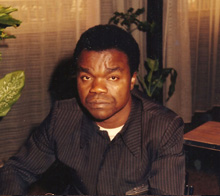 CNND became the Association Zaïroise de Bien-Être Familial
(AZBEF; the Zaïre Association for Family Welfare),
an affiliate member of the International Planned Parenthood
Federation (IPPF), on the condition that the Committee
changed into a full pledged non-governmental organization.
Dr. Miatudila Malonga was elected as the first president
of the newly formed NGO. AZBEF created one chapter in each
of the country’s six provinces. The association was
instrumental in channeling IPPF’s assistance to more
than 300 family planning service units located in and
outside the capital city of Kinshasa, the majority of
which were owned or operated by the state, FBOs, and
commercial companies. The NGOs played a prominent role
in disseminating information to change peoples’
knowledge, attitudes, and practices related to
reproduction through frequent interventions on
radio and television, as well as through newspapers,
public meetings, and other means.
CNND became the Association Zaïroise de Bien-Être Familial
(AZBEF; the Zaïre Association for Family Welfare),
an affiliate member of the International Planned Parenthood
Federation (IPPF), on the condition that the Committee
changed into a full pledged non-governmental organization.
Dr. Miatudila Malonga was elected as the first president
of the newly formed NGO. AZBEF created one chapter in each
of the country’s six provinces. The association was
instrumental in channeling IPPF’s assistance to more
than 300 family planning service units located in and
outside the capital city of Kinshasa, the majority of
which were owned or operated by the state, FBOs, and
commercial companies. The NGOs played a prominent role
in disseminating information to change peoples’
knowledge, attitudes, and practices related to
reproduction through frequent interventions on
radio and television, as well as through newspapers,
public meetings, and other means.
1979
UNFPA began supporting family planning in Zaïre.
1980-1984
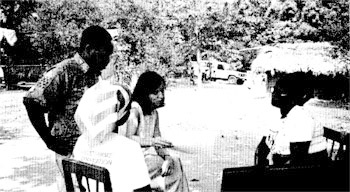 Tulane University received funding from USAID for community
based distribution (CBD) of contraceptives in one urban
(Matadi) and one rural area (Nsona Mpangu) in Bas Zaire.
This represented the first test of community-based distribution (CBD) in a Francophone
African country. After its success in Bas Zaire, the
model was later expanded to other areas of the country.
Tulane University received funding from USAID for community
based distribution (CBD) of contraceptives in one urban
(Matadi) and one rural area (Nsona Mpangu) in Bas Zaire.
This represented the first test of community-based distribution (CBD) in a Francophone
African country. After its success in Bas Zaire, the
model was later expanded to other areas of the country.
August 1981
The Ministry of Health signed an agreement with USAID for the creation of the Basic Rural Health project, which later became better known as SANRU (Soins de Sante Primaires en Milieu Rurale). The project objective was to support the creation of 50 decentralized rural health zones with an emphasis on child and maternal health, including family planning. USAID and the MOH selected ECZ to manage this national project on behalf of the MOH, in part because of the active role that the ECZ Medical Office had been playing with respect to the inclusion and promotion of family planning as part of their medical work. SANRU quickly became a key means of distributing family planning commodities to newly developing rural health zones throughout Zaïre. Family planning was defined as a component of the Minimum Package of Assistance, to be provided within each health facility. This was complimentary to the work of the Projet des Services des Naissances Desirables (PSND; Desirable Births Service Project) which was primarily concentrated in urban areas. By 1987, SANRU I & II projects had facilitated the creation of 100 of Zaire’s 306 health zones.
SIGNING OF THE PROJET DES DERVICES SE NAISSANCES DESIRABLES
February 1982
 The Ministry of Health established the Projet des
Services des Naissances Desirables
(PSND; Desirable Births Service Project), financed
by USAID, and integrated as one of the twelve divisions
of primary health care. This project supported the
construction of a building in the compound of the Kintambo
Maternity Hospital, which would house the administrative
offices of the PSND and a model FP clinic named Libota
Lilamu. The Ministry of Health selected Ms. Chirwisa Flora
Chirhamolekwa as director of PSND, charged with coordinating
family planning activities in coordiation with the other
eleven divisions of primary health care. The building and
clinic became operational in 1985.
The Ministry of Health established the Projet des
Services des Naissances Desirables
(PSND; Desirable Births Service Project), financed
by USAID, and integrated as one of the twelve divisions
of primary health care. This project supported the
construction of a building in the compound of the Kintambo
Maternity Hospital, which would house the administrative
offices of the PSND and a model FP clinic named Libota
Lilamu. The Ministry of Health selected Ms. Chirwisa Flora
Chirhamolekwa as director of PSND, charged with coordinating
family planning activities in coordiation with the other
eleven divisions of primary health care. The building and
clinic became operational in 1985.
PSND developed a very active program of family planning service delivery in Kinshasa, as well as in 13 cities in the country. With funding from USAID, PSND was able to open 490 family planning units integrated into health centers and maternity centers in 14 cities and three training centers in Kinshasa, Lubumbashi, and Kisangani. Fifteen surgical units became operational in 14 cities including surgical operating rooms and gynecologists and physicians trained in tubal ligation and vasectomy (although these methods did not gain widespread popularity). Three maternity centers were constructed for the family planning needs of clients. PSND provided contraceptive supplies and products to minimize the unmet need of contraceptives throughout the country. A research facility operated by PSND developed a database for the purpose of monitoring and evaluation of services, including achievement of results.

June 1986
Presidential order number 86/209 created the Conseil National de la Population (CONAPO; National Committee of Population). CONAPO, housed within the Ministry of Planning, was charged with coordinating and guiding broad national policy on population welfare, as well as promoting PSND. Up to that date, PSND had the health rationale for promoting contraception, partly out of fear of attacks had they promoted a demographic (Neo-Malthusian) rationale. Over the years, it has become more obvious that contraception also needed to be reframed more broadly, given its clear association with socio-economic development.
SET-BACK | LES ANNEES DES VACHES MAIGRES (THE LEAN YEARS)
1990
The political situation of the Congo began to deteriorate and Ms. Chirwisa stepped down as Director of PSND, under political pressure.
Septembre 1991
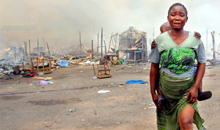 Civil unrest erupted in Zaïre resulting in widespread
destruction of businesses and infrastructure. The PSND
building at the Kintambo Maternity was among the casualties
of this rampage. The country’s political situation was
deteriorating, as a result of Mobutu’s reluctance to yield
to international pressure to democratize his regime and
adapt to the Post Cold War era.
Civil unrest erupted in Zaïre resulting in widespread
destruction of businesses and infrastructure. The PSND
building at the Kintambo Maternity was among the casualties
of this rampage. The country’s political situation was
deteriorating, as a result of Mobutu’s reluctance to yield
to international pressure to democratize his regime and
adapt to the Post Cold War era.
1991
By a ministerial order, the Projet des Services des Naissances Desirables (PSND; National Project of Desirable Births) was to be completely state funded, after USAID discontinued funding for PSND and SANRU (and most other health activities in the country). However, the government did not provide adequate means for operation, while the Minister of Health kept assigning additional personnel to and overstaffing PSND. Although the PSND continued to exist, it was virtually inactive.
March 1992
A presidential ordinance granted personnalité juridique (legal rights) to the Association Zaïroise pour le Bien-Être Familial (AZBEF/ND; Zaïrian Association for Family Welfare), giving it full NGO status and making it possible for it to become a full affiliate member of the IPPF. At this time, the association took in many members who did not share its philosphy and values, which proved problematic to the organization in subsequent years.
1994
President Mobutu left office in 1994.
December 1994
A delegation from Zaïre attended the International Conference on Population and Development (ICPD) that was held in Cairo, Egypt. This conference led to the adoption of the Reproductive Health Principle with new components centered on family planning and the issue of equal rights for women. The Zaïre delegates signed the Cairo Program of Action.
February 1996
Ministerial Decree No. 1250 / CAB / miniSP / 0096 created the National Program of Desirable Births, calling for the intensification of information , education and communication about family planning.
1996 - 2004
The armed conflict that gripped the country from 1996 to 2004 resulted in the paralysis of most health services in Kinshasa and other parts of Zaïre, including PSND. Program activities suffered mainly because the country failed to provide funds required to address needs. The MOH’s tendency to destabilize management with political interferences, assign superfluous personnel to operational units, and create needless structures and programs had a negative impact on government-operated health institutions.
May 1997
Continuous armed conflicts resulted in the conclusion of the Second Republic and the beginning of the Third Republic with Laurent-Désiré Kabila as President. The country’s third president renamed the country the "Democratic Republic of Congo,” but seven more years elapsed before the signing of a peace truce by various armed and unarmed forces. As a result of these upheavals, most donors of family planning, including USAID and IPPF, suspended their assistance to Zaïre/DRC - some as early as 1991. In 1997, the AZBEF was renamed Association de Bien-Etre Familial Familial/Naissances Desirables (ABEF/ND).
May 1997
The armed conflict that gripped the country from 1996 to 2004 resulted in the paralysis of most health services in Kinshasa and other parts of Zaïre, including PSND. Program activities suffered mainly because the country failed to provide funds required to address needs. The MOH’s tendency to destabilize management with political interferences, assign superfluous personnel to operational units, and create needless structures and programs had a negative impact on government-operated health institutions.
May 1997
Continuous armed conflicts resulted in the conclusion of the Second Republic and the beginning of the Third Republic with Laurent-Désiré Kabila as President. The country’s third president renamed the country the "Democratic Republic of Congo,” but seven more years elapsed before the signing of a peace truce by various armed and unarmed forces. As a result of these upheavals, most donors of family planning, including USAID and IPPF, suspended their assistance to Zaïre/DRC - some as early as 1991. In 1997, the AZBEF was renamed Association de Bien-Etre Familial Familial/Naissances Desirables (ABEF/ND).
1998
UNFPA tried to revitalize PSND efforts in the area of communication for behavior change, improve family planning awareness and advocacy, as well as to improve accessibility and utilization of family planning services. However, these and other attempts failed to overturn the general decline of family planning.
REPOSITIONING THE FAMILY PLANNING PROGRAM IN DRC
June 2000
The ECC (now the Eglise du Christ au Congo) established a partnership with a U.S.-based group, Interchurch Medical Assistance (IMA), to successfully submit a proposal to USAID to reactivate SANRU. These efforts established the SANRU III project to assist 56 church-managed health zones to begin health services. The national conference organized by SANRU in 2003 was, in fact, a massive reunion of health workers from all corners of Congo, some whom had not met face to face for more than 14 years. Within two years the World Bank funded a project (PMURR) based on the SANRU III model to assist an additional 70 health zones in rebuilding. These two projects effectively created the momentum for moving Congo from a relief/humanitarian situation back into health development, except in the ever-fragile eastern Congo.
December 2001
Ministerial order number 1250/CAB/MINI/S/AJ/KIZ/009/2001 created the Programme National de Santé de la Reproduction (PNSR; National Program of Reproductive Health), with 11 provincial coordination offices. PNSR integrated family planning and the co-responsibility of men in reproductive health. Mme. Louise Mbo was named the first Director of PNSR.
January 2003
Ministerial order number 1250/CAB/MIN/S/CJ/001/2003 led to the creation and organization of the Programme National de Santé de l’Adolescent (PNSA; National Program of Adolescent Health), with Mr. Mbadu Mwanda named as its first Director.
May 13-14, 2004
The first conference to reposition family planning in the DRC took place under the sponsorship of the Advance Africa Project and SANRU III, but there were few tangible results from it, possibly because the country was still in considerable turmoil.
July 2008
 Programme National de Santé de la Reproduction,
under the leadership of Dr. Marie Louise Mbo, MPH and with the support
of the UNFPA and the WHO, revised the national policy on
reproductive health. It included nine components of the
Cairo Programme of Action, replacing the anti-abortion
component with a component involving the co-responsibility
of men in the improvement of women's status. The PNSR
clinic, Libota Lilamu, has continued to provide FP services,
although it has not been refurbished since the period of
neglect during the civil unrest.
Programme National de Santé de la Reproduction,
under the leadership of Dr. Marie Louise Mbo, MPH and with the support
of the UNFPA and the WHO, revised the national policy on
reproductive health. It included nine components of the
Cairo Programme of Action, replacing the anti-abortion
component with a component involving the co-responsibility
of men in the improvement of women's status. The PNSR
clinic, Libota Lilamu, has continued to provide FP services,
although it has not been refurbished since the period of
neglect during the civil unrest.
December 8-9, 2009
 A second conference, called Le Conference Nationale pour le Repositionnement de la Planification Familiale en DRC
(National Conference to Reposition Family Planning in the DRC),
took place on December 8-9, 2009. A multi-sectoral committee
was formed at the close of this event to implement a series of
recommendations from the conference. The First Lady,
Marie-Olive Lemba Kabila Kabange, presided at this event.
A second conference, called Le Conference Nationale pour le Repositionnement de la Planification Familiale en DRC
(National Conference to Reposition Family Planning in the DRC),
took place on December 8-9, 2009. A multi-sectoral committee
was formed at the close of this event to implement a series of
recommendations from the conference. The First Lady,
Marie-Olive Lemba Kabila Kabange, presided at this event.
June 13-14, 2012
The Reunion de Plaidoyer pour le Financement de la Planification Familiale en RDC (Meeting of Advocacy for the Financing of Family Planning in the DRC) brought together major stakeholders involved in family planning in the DRC and reinvigorated local effort to advance FP. The objective of the conference was to accelerate universal access to family planning interventions in the DRC. Desired results of the conference were to identify gaps in supply and demand, establish a plan of action to address the gaps and create a mechanism of integration, sustainability and coordination for FP. An important mechanism created in December 2012 was the Kinshasa Family Planning Coalition, which has met quarterly with the aim of increasing contraceptive availability in Kinshasa.
March 2013
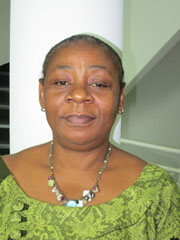
Dr. Marie Thérèse Kyungu, MD, became Director of the PNSR in March 2013. An Ob-Gyn by training and a practicing clinician, Dr. Kyungu previously served as Deputy Director of the PNSR. She currently manages a staff over 100 persons.
